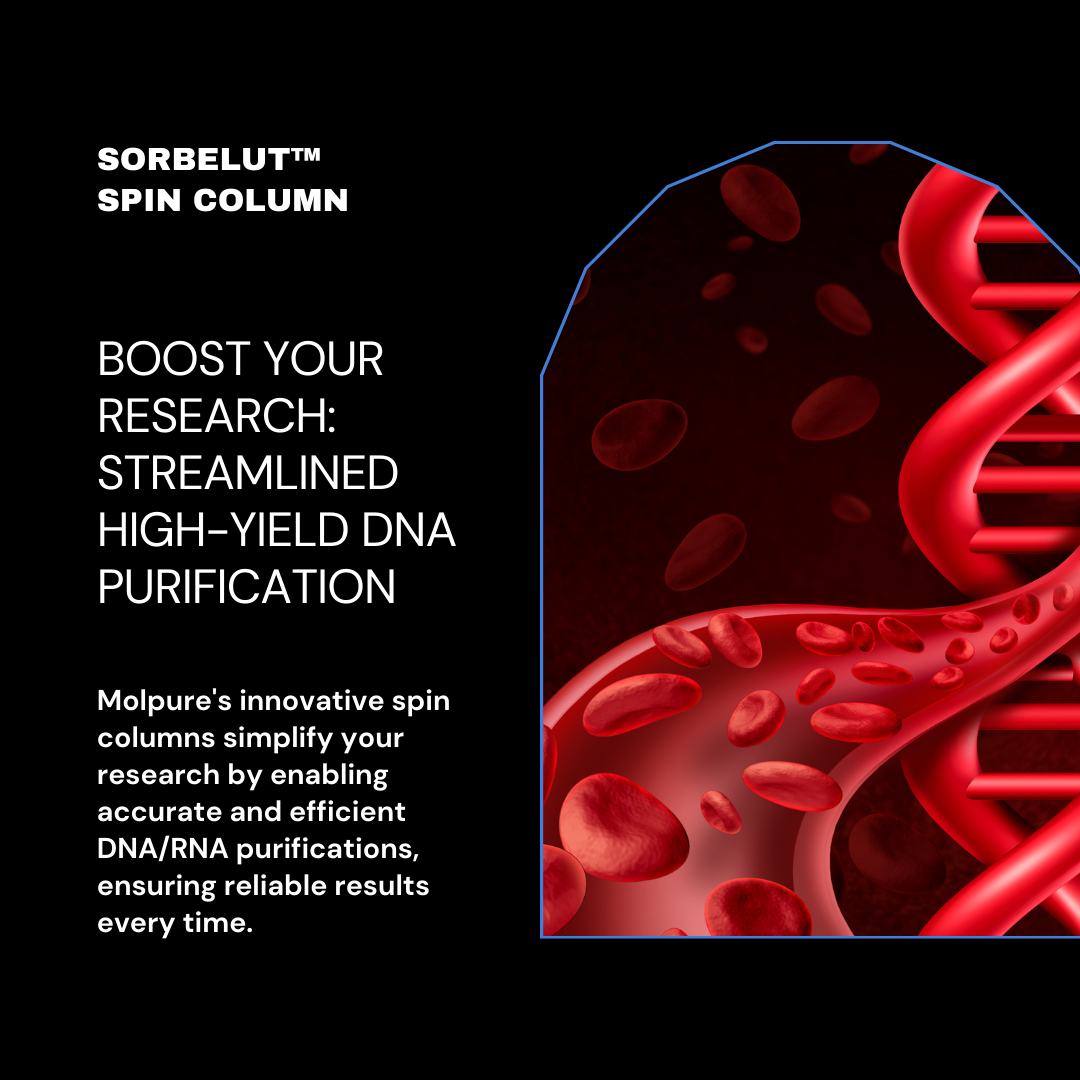SorbElut DNA and RNA Extraction Mini Columns are a type of spin column used to isolate and purify DNA or RNA from various biological samples. Here's a general overview:
Key Features:
• Spin Column Technology: These columns utilize silica-based membranes that selectively bind nucleic acids under specific conditions.
• Versatility: They can be used to extract DNA or RNA from a range of sources, including:
• Cells: Bacterial, mammalian, yeast
• Tissues: Animal, plant
• Body fluids: Blood, serum, saliva
• Efficiency: They offer high yields and purity of extracted nucleic acids.
• Convenience: The spin column format allows for rapid and efficient processing of multiple samples simultaneously.
General Procedure:
1. Sample Preparation:
• Lysis: The starting material is lysed to release the nucleic acids. This may involve the use of buffers containing detergents, chaotropic agents, and enzymes.
• Purification: The lysate is treated to remove contaminants such as proteins and other cellular debris. This often involves steps like centrifugation and the addition of specific reagents.
2. Binding to the Column:
• The clarified lysate is loaded onto the spin column.
• Under appropriate conditions (e.g., high salt concentration), the nucleic acids bind to the silica membrane within the column.
3. Washing:
• The column is washed several times with specific buffers to remove unbound impurities.
4. Elution:
The purified nucleic acids are eluted from the column using a low-salt buffer or water.
Applications:
• Molecular biology research:
• PCR and Sequencing
• Southern blotting
• Northern blotting
• Gene expression analysis
• Clinical diagnostics:
• Infectious disease testing
• Genetic testing
• Forensic analysis
Note:
• Specific protocols and reagents may vary depending on the type of sample, the desired nucleic acid (DNA or RNA), and the intended downstream application.

